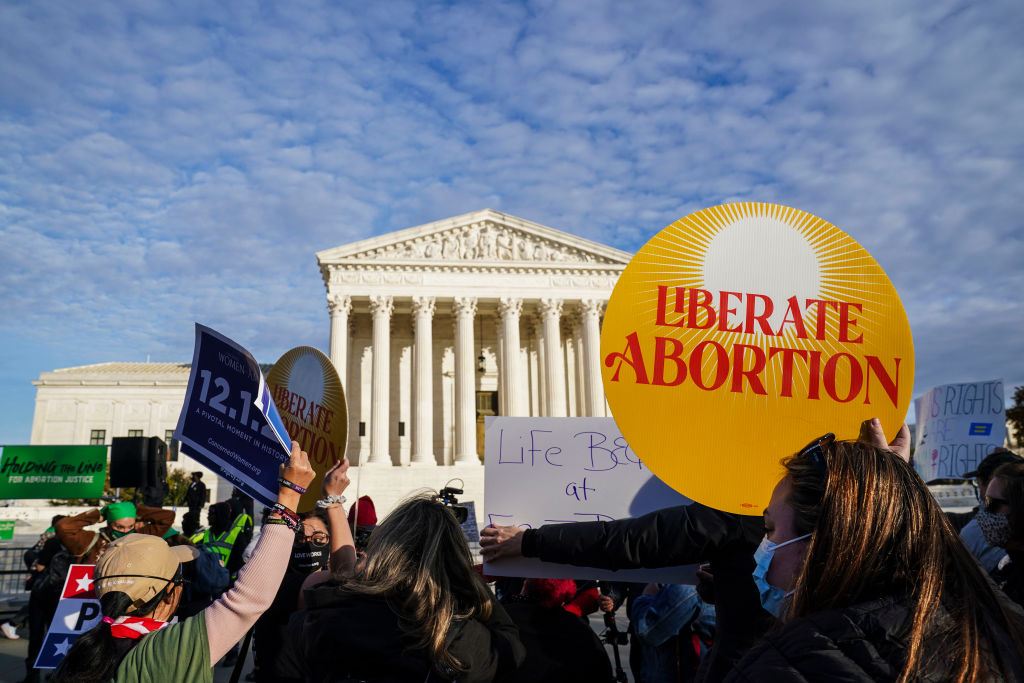Supreme Court would overturn Roe v.
Wade according to leak to Politico 7:02
(CNN Spanish) --
A draft of the majority opinion of the Supreme Court would annul the case Roe vs.
Wade that granted a federal constitutional right to abortion, according to Politico.
The draft, written by Judge Samuel Alito, was distributed in early February and has not yet been approved, so votes may change before the final opinion is issued.
A Supreme Court spokesman declined to comment to CNN.
CNN has not independently confirmed the authenticity of the draft.
Politico says he has authenticated it.
In the draft opinion, Alito writes that the Roe v.
Wade "must be overturned."
“The Constitution makes no reference to abortion and no such right is implicitly protected by any constitutional provision,” Alito wrote.
Abortion has been considered legal in the United States since 1973 following the Roe v.
Wade who says that women have the right to have an abortion.
It was not legislated after this historic decision because it was considered a law.
However, access to treatment depends on the laws determined by each state and most states have established gestational limits that vary from 20 to 24 weeks.
advertising
Why is it called Roe vs.
Wade?
The case is brought by Norma McCorvey in 1971, known in court documents as
Jane Roe
;
a woman living in Texas who did not want to continue her third pregnancy, but, under Texas law, she could not legally abort.
McCorvey sued
Henry Wade
, the Dallas County District Attorney (between 1951 and 1987), who enforced a Texas law that prohibited abortion except to save a woman's life.
This law had been declared unconstitutional in a previous case in federal district court.
Hence the name of this case: Roe vs.
Wade.
How did the Supreme Court vote?
In 1971, the Supreme Court agreed to hear Roe v. Wade, who enforced Texas' abortion law, which had been found unconstitutional in a previous federal district court case.
But Wade ignored the court ruling and both sides appealed.
The case is later argued before the United States Supreme Court on December 13, 1971, and almost a year later, the case is argued again on October 11, 1972.
Finally, on January 22, 1973, the US Supreme Court affirms the legality of a woman's right to have an abortion under the Fourteenth Amendment to the Constitution.
What was the result of the vote?
The United States Supreme Court ruled in Roe's favor in a 7-2 decision.
The Court held that a woman's right to an abortion was included in the right to privacy (recognized in Griswold v. Connecticut) protected by the Fourteenth Amendment.
The decision granted women the right to abort during the entire pregnancy and defined different levels of state interest to regulate abortion in the second and third trimesters.
Who were the judges and what did they vote for?
Majority: Harry A. Blackmun (for The Court), William J. Brennan, Lewis F. Powell Jr., Thurgood Marshall.
Participants: Warren Burger, William Orville Douglas, Potter Stewart.
Dissenters: William H. Rehnquist, Byron White.
The full text of the judges' opinions can be read here.
How many states did the ruling affect?
The federal ruling affected the laws of 46 US states where abortion was considered legal.
Since then, women have the right to choose between pregnancy and abortion.
With information from Tierney Sneed and Ariane De Vogue
AbortionSupreme Court

